:: Contemporary Art Museum St. Louis, St. LouisAs always, at The Archi-Tourist contributors and contributions are always welcome!
:: The Pulitzer Foundation for the Arts, St. Louis
:: Chaussegros-de-Lery Complex, Montreal
:: Cite Multimedia 7, Montreal
:: Cite Multimedia 8, Montreal
:: Cirque du Soleil Dormitory, Montreal
Architectural engineering design.autocad career .learnin,news,architecture design tutorial,
Sunday, April 30, 2006
Archi-Tourist Updates
Prompted by my friend Frank's post at Metroblogging Montreal, and the realization that I've grown slack with any additions the site, I added a bunch of entries to The Archi-Tourist over the weekend.
Friday, April 28, 2006
Look Who's Hiring
The Office for Metropolitan Architecture (OMA) is a leading international partnership practicing contemporary architecture, urbanism and cultural analysis.And my favorite sentence in their job post at Archinect (my emphasis):
Candidates must be highly creative, innovative and must feel confident in a complex, stressful and chaotic context.At least they're honest.
Cranes
One of the clearest signs of a thriving economy, progress, and all that comes with that is cranes. After the Berlin Wall fell and buildings started to fill the gaps in the bombed-out city, a skyline of cranes was the most prominent image for the place.

Image from here
Now, that distinction of "crane capital" would probably go to Dubai or China. Regarding the latter, I heard today that more than half of all cranes in the world currently reside on construction sites in China, an amazing fact (if true) though not necessarily surprising.
There seems to be some strange appeal for cranes, evidenced by the web page Crane Porn and an article in today's Chicago Tribune that focuses on a crane operator for Trump Tower. The graphic below is a handy guide to that tower crane (click it for the larger view with annotations).

Crane Links:
Image from here
Now, that distinction of "crane capital" would probably go to Dubai or China. Regarding the latter, I heard today that more than half of all cranes in the world currently reside on construction sites in China, an amazing fact (if true) though not necessarily surprising.
There seems to be some strange appeal for cranes, evidenced by the web page Crane Porn and an article in today's Chicago Tribune that focuses on a crane operator for Trump Tower. The graphic below is a handy guide to that tower crane (click it for the larger view with annotations).
Crane Links:
:: Crane Porn
:: Crane Porn Flickr Pool
:: Wikipedia page
:: FreeFoto.com
Cramer Leaving
According to the Chicago Tribune,
(Thanks to Sally for the head's up!)
On a side note, it's annoying to see Blair Kamin ending his all-too-brief report linked above with the sentence, "He also was a vocal supporter of the Soldier Field renovation." Back in 2004, Kamin anticipated Soldier Field's loss of landmark status, a position he's been pushing for quite a while. As Lynn Becker points out, "Kamin...made the new Soldier Field his own Baby Richard, filling up column after column of derisive critiques even after all doubt that the project would be built had been removed."
So even after landmark status has been dropped, the issue isn't apparently dead for Kamin. It's almost like he must mention Soldier Field in every damn column that he writes, be it appropriate or not, in this case not.
Ned Cramer, the first full-time curator at the Chicago Architecture Foundation, is leaving the non-profit group known for its tours and other programs to become editor of a planned architecture magazine in Washington, the foundation says.In his nearly four-year tenure as curator, Cramer has brought many interesting exhibitions to the CAF, including the Big & Green show on sustainable architecture and the current one on public space.
(Thanks to Sally for the head's up!)
On a side note, it's annoying to see Blair Kamin ending his all-too-brief report linked above with the sentence, "He also was a vocal supporter of the Soldier Field renovation." Back in 2004, Kamin anticipated Soldier Field's loss of landmark status, a position he's been pushing for quite a while. As Lynn Becker points out, "Kamin...made the new Soldier Field his own Baby Richard, filling up column after column of derisive critiques even after all doubt that the project would be built had been removed."
So even after landmark status has been dropped, the issue isn't apparently dead for Kamin. It's almost like he must mention Soldier Field in every damn column that he writes, be it appropriate or not, in this case not.
Thursday, April 27, 2006
Paris 2054

gravestmor's got the goods on Renaissance, a new sci-fi film set in "Paris 2054," directed by Christian Volckman.
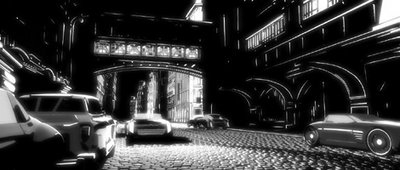
Marcus, at gravestmor, describes the film as "Sin City meets Blade Runner meets Metropolis meets Waking Life" (though hopefully not the latter) – and, from the looks of it, I'd add Alphaville.
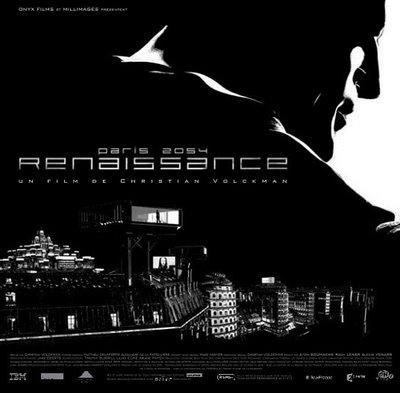
But, either way, the film seems further proof that students of architectural design should stop pinning all their hopes solely on architecture, and consider guerilla careers as film, or even game, start-ups, using their graphic ideas and energy to take over Hollywood. Invest in some Power Macs, buy some editing software, talk to your musician friends, get a writer – hire BLDGBLOG – and suddenly that M.Arch degree will put you behind the Oscar stand. Drooling champagne and groping Salma Hayek.
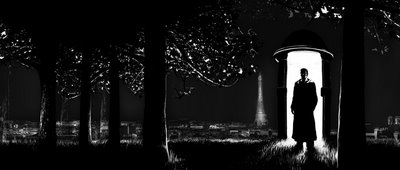
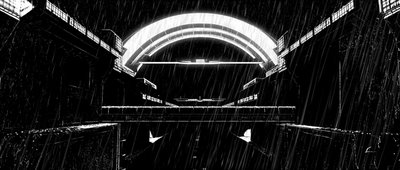

But I digress.
These are film stills taken from the movie's press section – the film's in French, by the way – and a bit more info can be found at Twitch and Variety.
Then start outlining your own cinematic debut.

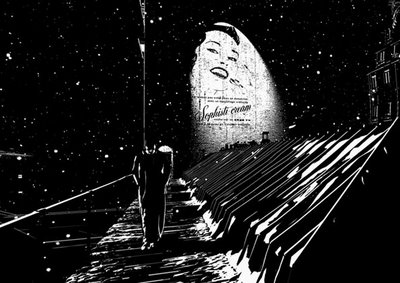
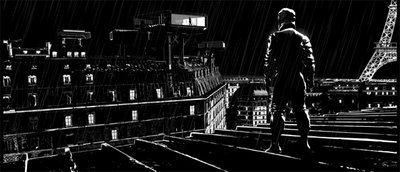
[Images: ©Onyx Films/Millimages/Luxanimation/Timefirm Ltd/France 2 Cinema].
(Via gravestmor).
Wednesday, April 26, 2006
Jacobs Block
Lisa Chamberlain at Polis, teaming up with Curbed, has started a contest to "Nominate the Best Jane Jacobs Block in NYC". She explains that "the idea is to celebrate the 'street ballet' of your favorite block...because it exhibits the characteristics that Jane Jacobs enumerated as essential ingredients to a quality urban life," ingredients she enumerates in her post.

I would probably submit what's above, but I don't meet the guidelines (I only have the one photo). Regardless, I'll explain what I like about it and how it meets the essential ingredients.
The block is at the intersection of MacDougal and King Streets in Soho; the photo is taken from 12 Chairs, a great little cafe that expanded in the last couple years. As you can maybe see by the photo, MacDougal is a thru-street while King Street ends in a T-intersection at MacDougal, a very rare situation in Manhattan. This condition is part of what makes this block of MacDougal (from Houston on the north to Prince on the south) so appealing: it's reduced traffic, it's mixture of two short streets, and the surprise of the T-intersection. Personally, I just love sitting in the cafe and staring out the window, a la the image above.
Like a lot of blocks in the area, it fits the four Jacobsonian ingredients that Lisa mentions:
I would probably submit what's above, but I don't meet the guidelines (I only have the one photo). Regardless, I'll explain what I like about it and how it meets the essential ingredients.
The block is at the intersection of MacDougal and King Streets in Soho; the photo is taken from 12 Chairs, a great little cafe that expanded in the last couple years. As you can maybe see by the photo, MacDougal is a thru-street while King Street ends in a T-intersection at MacDougal, a very rare situation in Manhattan. This condition is part of what makes this block of MacDougal (from Houston on the north to Prince on the south) so appealing: it's reduced traffic, it's mixture of two short streets, and the surprise of the T-intersection. Personally, I just love sitting in the cafe and staring out the window, a la the image above.
Like a lot of blocks in the area, it fits the four Jacobsonian ingredients that Lisa mentions:
1-Mixed primary uses: Retail and apartments, with a little business space as well.Visit Polis and Curbed for more information. Contest ends Friday, May 12.
2-Short blocks: Two short blocks, as noted.
3-Old Buildings: The buildings here are old yet unexceptional, perhaps making them a bit more affordable in what's an extra-expensive area.
4-High density: Party wall buildings are all along these blocks (though there might have been a vacant lot or two in the past, I can't recall and am 1,000 miles away at the moment).
The Garages of Branislav Kropilak
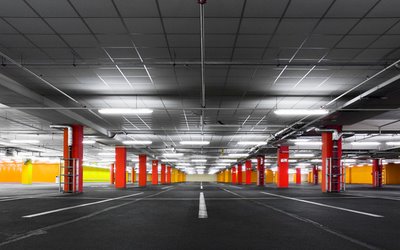
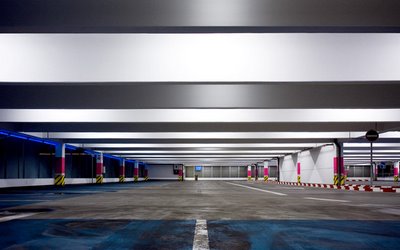
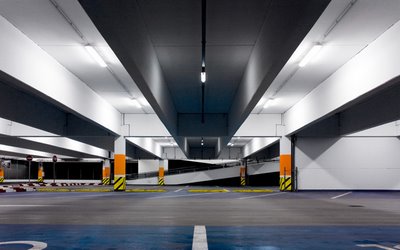
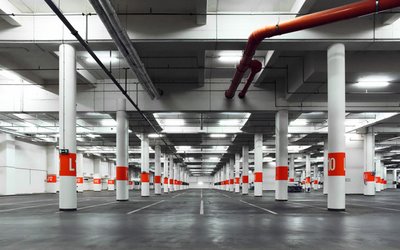
[Images: Four excerpts from the amazingly surreal car park photography of Branislav Kropilak, whose other work appears to document landing airplanes: blurs of stretched light through the angled sky. Many more garages where these came from. Via we make money not art].
Tuesday, April 25, 2006
Jane Jacobs, 1916-2006
Jane Jacobs, the author of the legendary and immensely influential book The Death and Life of Great American Cities (among numerous other titles) died today in Toronto at the age of 89.

To learn more about Jacobs, check out Michael Blowhard's recent brief history and an interview with James Howard Kunstler from 2001.
To learn more about Jacobs, check out Michael Blowhard's recent brief history and an interview with James Howard Kunstler from 2001.
Z
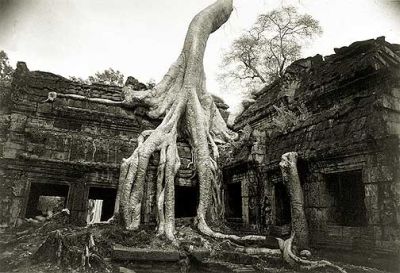 [Image: Angkor Wat, Cambodia, a city reclaimed by the roots of trees; photographed by Kenro Izu].
[Image: Angkor Wat, Cambodia, a city reclaimed by the roots of trees; photographed by Kenro Izu].I just finished reading a long and totally fascinating article by David Grann called "The Lost City of Z," from an old issue of The New Yorker.
In it, Grann explores whether or not a city called "Z" might exist somewhere in the Brazilian rain forest – "a region nearly the size of the continental United States" – while tracking the life of a British explorer, Colonel Percy Harrison Fawcett, who "disappeared in the forest, along with his son and another companion" in 1925.
"Fawcett had been acclaimed as one of the last great amateur archeologists and cartographers," Grann writes, "men who ventured into uncharted territories with little more than a machete, a compass, and an almost divine sense of purpose." Colonel Fawcett believed that, "in the southern basin of the Amazon, between the Tapajós and the Xingu tributaries," lay Z, a ruined city lost to the jungles of time.
"To bolster his case that the ruins of Z would be found in the region," Grann tells us, Fawcett "cited carvings that he had seen on rocks in the area, and documents that he had uncovered from Portuguese conquistadores in Brazilian archives. He quoted a Brazilan scholar, who declared, 'My studies have convinced me that... there may yet be found in our forests, as yet penetrated in few places, ruins of ancient cities.'"
Because of Fawcett's disappearance, however, at least 100 other explorers have lost themselves in the Amazon, looking for his remains (or, more likely, looking for Z). There was, of course, one crucial problem: Fawcett, funded by the Royal Geographical Society, kept his expeditionary path completely secret, even releasing false latitudinal coordinates for fear that someone else might steal the final prize: discovering, mapping, and documenting Z. Fawcett was exploring at "the peak of the British Empire," we read, "a time when the English were constantly confronting and colonizing new, exotic civilizations; when imperial explorers such as David Livingstone were trying to map the so-called 'dark continent' of Africa; and when the Allan Quartermain novels by Fawcett's friend H. Rider Haggard, which chronicle the intrepid adventurer's discovery of ancient civilizations in Africa, were wildly popular." The last thing he needed, in other words, was another explorer hot on his trail.
To make a (very) long story short, David Grann – the article's author – visits Colonel Fawcett's granddaughter in Cardiff, Wales, whereupon Grann discovers unpublished letters from Fawcett that reveal the expedition's true route through the jungle. Thus Grann sets off for Brazil.
More and more information about Fawcett pops up. "One day, during a visit to a colonial archive in Rio de Janeiro," Grann reports, "Fawcett discovered a document, partly eaten by worms, that was titled 'Historical account of a large, hidden, and very ancient city, without inhabitants, discovered in the year 1753.'" Within the document, Grann tells us, Fawcett learned about a Portuguese "soldier of fortune," who, along with his expeditionary team, "ascended a mountain path" to find "a spellbinding vista: below them were the ruins of an ancient city. The men climbed down, and discovered stone arches, a statue, wide roads, and a temple with hieroglyphics." Reading the account, Fawcett "became even more entranced with the idea of a lost civilization" – and, presumably, so did Grann.
Now in Brazil, Grann – carefully tracking Fawcett's final self-enforestation – is taken by a guide to the ruins of an enormous ranch built deep in what used to be jungle; what he sees there shocks him: "The farm had been consumed by jungle in just a few decades, and I wondered how actual ancient ruins could possibly survive in such a hostile environment. For the first time, I had some sense of how it might be possible for the remnants of a civilization simply to disappear."
Several pages ensue in which Grann hears contradictory tales of a kidnapped white man paraded through the territories of various tribes back in the 1930s; albino children; "very bad Indians"; and "a colossal man," named Afukaká, "his arms as thick as legs, his legs as big as a chest."
But then my eyes started popping out of my head, because here Grann meets Michael Heckenberger, a "highly regarded professor at the University of Florida," who was doing field work in the upper Xingu basin.
 [Image: NASA, satellite views of Brazil's Xingu National Park].
[Image: NASA, satellite views of Brazil's Xingu National Park].Prof. Heckenberger "had battled everything from malaria to snakes to virulent bacteria that made his skin peel off and forced him to boil his garments twice a day." He looked "a little like a surfer." Familiar with Fawcett's story, the archaeologist then turns to Grann and says: "I want to show you something." He grabs a machete and they walk together, more than a mile into the forest, "cutting away tendrils from trees, which shot upward, fighting for the glow of the sun."
Then Heckenberger stops. He gestures at the ground: it's sloping. Why is it sloping?
It used to be a moat.
"What do you mean, a moat?" Grann asks.
"A moat," Heckenberger answers. "A defensive ditch." It's nearly a mile in diameter and more than 900 years old.
Heckenberger then shows Grann some excavation pits, where foundations of "palisade walls" are found, half-buried in black soil.
Turns out the group of them are standing in "the remains of a massive man-made landscape. There was not just one moat but three, arranged in concentric circles. There was a giant circular plaza where the vegetation had a different character than that of the rest of the forest, because it had once been swept clean. And there had been a sprawling neighborhood of dwellings, as evidenced by even denser black soil, which had been enriched by decomposed garbage and human waste."
There were also the remains, Heckenberger explains, of "Roads. Causeways. Canals."
So is it the city of Z? Or is Z still out there, waiting?
Monday, April 24, 2006
Monday, Monday
My weekly page update:

M House in Nagoya, Japan by architecture w.
The updated book feature is The Beatles: The Biography, by Bob Spitz.
Some unrelated links for your enjoyment:
M House in Nagoya, Japan by architecture w.
The updated book feature is The Beatles: The Biography, by Bob Spitz.
Some unrelated links for your enjoyment:
What to do with Southpoint Park?
Young architects from around the world ponder the question. (via ArchNewsNow)
Urbanscapes
"Architectural Speculation :: Landscape Future :: Urban Morphosis" (added to sidebar under blogs::urban)
noticias arquitectura
Now also in blog form. (added to sidebar under blogs::architecture)
Sunday, April 23, 2006
Tulum
Below is 5NOVE/Alessandro Console's winning entry in Arquine's international competition for a Site Museum in Tulum, Mexico. Many thanks to Alessandro for providing the text and images.
Making Radura

The project relates itself with two different contexts: the archaeological site of Tulum and the forest.

Click image for larger view
Our strategy of intervention tends to reassume the tension of this twofold relation in a single design gesture. In this spirit, the museum assumes a hypogenous character establishing with its roof a platform that defines a glade in the surrounding space of the woodland.
The museum develops itself below the ground level, under the glade. It is a monolithic element, enveloped by stone panels, on which is elaborated operations of addition and subtraction in order to enlighten the space of the museum.

Click image for larger view
The project defines then two parallels spaces: the underground rooms that are related to the imagery of the ancient Mexican architecture, and an upper ground virtual room that is formed by the sky and the trees. The museum is reached through a non-linear path that connects the level of the street with the level of the building. It is an experential path that does not reveal immediately the museum, but instead it exposes it progressively.

The museum is formed by a series of autonomous rooms that are set together in a way to create a series of different paths inside the expositive spaces. The rooms are alternated with open spaces that allow lateral illumination. Vertical illumination is assured by the series of lithic elements on the roof that captivates and inserts the light. The walls are characterized with a superficial treatment that is inspired from the antic decoration of the Maya civilization, creating a texture that filters and decompose the external light.

Click image for larger view
Project Team: Alessandro Console, Giuditta Benedetti, Alessio Cancellieri
5NOVE is: Alessandro Console, Gina Oliva, Andrea Canale, Alessio Cancellieri and Giuditta Benedetti.
Making Radura
The project relates itself with two different contexts: the archaeological site of Tulum and the forest.
Click image for larger view
Our strategy of intervention tends to reassume the tension of this twofold relation in a single design gesture. In this spirit, the museum assumes a hypogenous character establishing with its roof a platform that defines a glade in the surrounding space of the woodland.
The museum develops itself below the ground level, under the glade. It is a monolithic element, enveloped by stone panels, on which is elaborated operations of addition and subtraction in order to enlighten the space of the museum.
Click image for larger view
The project defines then two parallels spaces: the underground rooms that are related to the imagery of the ancient Mexican architecture, and an upper ground virtual room that is formed by the sky and the trees. The museum is reached through a non-linear path that connects the level of the street with the level of the building. It is an experential path that does not reveal immediately the museum, but instead it exposes it progressively.
The museum is formed by a series of autonomous rooms that are set together in a way to create a series of different paths inside the expositive spaces. The rooms are alternated with open spaces that allow lateral illumination. Vertical illumination is assured by the series of lithic elements on the roof that captivates and inserts the light. The walls are characterized with a superficial treatment that is inspired from the antic decoration of the Maya civilization, creating a texture that filters and decompose the external light.
Click image for larger view
Project Team: Alessandro Console, Giuditta Benedetti, Alessio Cancellieri
5NOVE is: Alessandro Console, Gina Oliva, Andrea Canale, Alessio Cancellieri and Giuditta Benedetti.
Friday, April 21, 2006
Friday News
Some articles that caught my attention today.
:: Security Concerns at Ground Zero
No, not Freedom Tower again; this time it's the Memorial. It sounds like a Catch-22: the design "encourages and engenders public interaction," which in turn, "constitute[s] vulnerabilities from a security perspective..." Can a public space ever be completely safe from terrorism? And still be truly public? (via Archinect)
:: Strangers on a Train
The Wall Street Journal covers the "Dan Ryan Dig" from the perspective of whiny drivers who now are taking commuter trains and public transportation. (via Gapers Block)
:: Americans commute longer than ever
According to the U.S. Census Bureau, "2.8 million people have so-called extreme commutes, topping 90 minutes." You don't say. (also via Archinect)
:: Top 10 Green Projects of 2006
Didn't think I could end on a car story, did ya? Sarah at Inhabitat covers the AIA/COTE's top ten, which includes the Solar Umbrella House, the World Birding Center + 8 more. (thanks Sarah!)
Have a Happy Earth Day!
Secret Soviet Submarine Base

[Image: Via Fun Mansion].
From Fun Mansion: "Until the collapse of the Soviet Union in 1991 Balaklava was one of the most secret towns in Russia. 10km south east of Sevastopol on the Black Sea Coast, this small town was the home to a Nuclear Submarine Base."


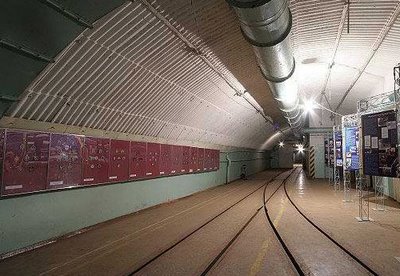
[Images: All images via Fun Mansion].
"The base remained operational after the collapse of the Soviet Union in 1991 until 1993 when the decommissioning process started and the warheads and low yield torpedos were removed. Then in 1996 the last Russian Submarine left the Base."
Apparently, there are now guided tours.

[Image: Via Fun Mansion].
(Originally spotted at Defense Tech; this post simultaneously published on Bryan Finoki's Subtopia; see also this LiveJournal blog – though it's in Russian).
In space, no one can hear you pray

[Image: NASA].
Qibla is the direction that a Muslim must face when praying – specifically, toward the Kaaba, in Mecca. In order to align oneself properly with that religious axis mundi, all kinds of complicated mathematical techniques had to be used or developed. From compasses to azimuths – to spherical trigonometry – determining what angle to take in relation to the horizon became as much a mathematical, or geographic, pursuit as it was religious.
So now, as Malaysia prepares to send three Muslim astronauts into space, the question of qibla has once again been revived: in what direction should an astronaut pray in order to face Mecca? As that last link reminds us, these astronauts "will also visit the International Space Station, which circles the earth 16 times in 24 hours, so another thorny question is how to pray five times a day as required by Islam."
I'm imagining a bewildering series of gyroscopes, mirrors, magnets and platforms – called the Prayer Chair – with arms covered in quantum clocks, ticking off "days" where there are none, keeping time in space devoid of terrestrial references. Motors will click and whir, aligning the chair constantly, and whole new branches of robotics – RoboQibla™ – gyroPrayer® – will take off. Science academies throughout the Muslim world will start producing new and strange direction sensors, devices of alignment that'd make John Dee proud and Athanasius Kircher whistle. New space stations designed by architecture students in Dubai will show us the future of intercelestial travel: self-unfolding, solar-powered spaceships, ceaselessly rotating in space – whilst maintaining perfect ship-to-Mecca alignment.
The Jesuits respond with floating cathedrals... flying buttresses in space.
(Original article spotted at Off Center).
Thursday, April 20, 2006
Delta force

[Image: A false-color "enhanced thematic map" of the involuted deltaic coastline of Guinea-Bissau; check out the fractal self-looping madness of NASA's incredible 4.6MB version].
Wednesday, April 19, 2006
Grids and surfaces
Cylinders
Cylinders is an architectural installation by Indio, California-based The Art Office.

They are "members of a 27-piece tight-knit family...activated through natural and artificial light."


"Their recorded information disperses as one navigates around and amongst the pieces."

"Through their particular geometrical and structural parameters, each piece acquires its own character and sensibility."

"They are meant to be viewed from above, below, and from eye to eye."

"They are here to inspire, to share, and to converse with."

To me these repetitious, permeable, illuminated objects hold an immediate appeal. Their process and construction create not only an exterior form but also an interior space. With this in mind, it's clear that the The Art Office wants to take this design to the next level: inhabitable spaces.

More information and images at The Art Office's blog.
They are "members of a 27-piece tight-knit family...activated through natural and artificial light."
"Their recorded information disperses as one navigates around and amongst the pieces."
"Through their particular geometrical and structural parameters, each piece acquires its own character and sensibility."
"They are meant to be viewed from above, below, and from eye to eye."
"They are here to inspire, to share, and to converse with."
To me these repetitious, permeable, illuminated objects hold an immediate appeal. Their process and construction create not only an exterior form but also an interior space. With this in mind, it's clear that the The Art Office wants to take this design to the next level: inhabitable spaces.
More information and images at The Art Office's blog.
AFH Chicago Events
Some local Architecture for Humanity events this week to pass along:
After Katrina: Rebuilding and Re-envisioning the Gulf CoastUpdate 04.21: Check out the Gutter for a first-hand account of Thursday night's panel discussion.
Hosted by: Chicago Foundation for Architecture
April 20, 2006 @ 6PM
The John Buck Company Lecture Hall Gallery, 224 S. Michigan Ave., Chicago, IL.
PANELISTS
Reed Kroloff, Dean, School of Architecture, Tulane University
John Norquist, President and CEO, Congress for the New Urbanism
Kate Stohr, co-founder, Architecture for Humanity
Thomas Murphy, Urban Land Institute
Moderated by Ned Cramer, Curator, Chicago Architecture Foundation
For more information, visit the CAF.
re:FAB
Hosted by Civic Blueprint
April 21 @ 7:30 pm
Salvage One - 1840 W. Hubbard, Chicago, IL
Join Chicago's design community at a benefit hosted by Civic Blueprint to benefit Architecture for Humanity. Live performances by Rebirth Brass Band of New Orleans. Spirits and hors d'oeuvres. Silent Auction. Architecture for Humanity-Chicago competition winners will be on display.
Tickets $75-$88 depending on date and method of purchase. Visit the event's web site or email Civic Blueprint at refab@thecivicblueprint.org for further information.
Tuesday, April 18, 2006
A Shopper’s Guide to Urban Catastrophe
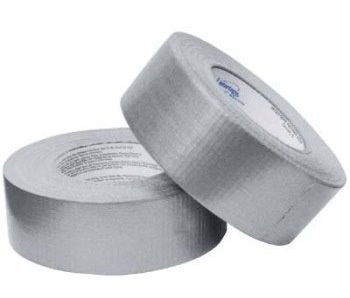
Exactly one hundred years ago to the day a "large horizontal displacement" along the San Andreas Fault devastated the city of San Francisco. In the century since then, hurricanes have battered Miami, levees have failed New Orleans, airplanes have become Weapons of Mass Destruction, and "prodigious snowfall combined with drenching spring rains" has conspired to wreak havoc on Grand Forks, North Dakota.
American urban catastrophe, in other words, is everywhere.
This post-disaster urban world – with no police, no public utilities, no clean drinking water, and, potentially, no hope – is something you can prepare for, however, by shopping.

In February 2003, Homeland Security’s then-chief Tom Ridge made life far simpler for Americans everywhere by unveiling a national catastrophe shopping list – at the top of which was duct tape.
"Stash away the duct tape!" said Ridge, and millions did just that. It didn't matter that duct tape was widely alleged to be ineffective in the face of biological and chemical attack (or that Ridge later withdrew his own advice, complaining that there had been "some political belittling of duct tape"); the silver rolls flew right off the shelves, salving (or stoking?) the anxieties of a traumatized nation.
The rest of Ridge's shopping list – Recommended Items to Include in a Basic Emergency Supply Kit – compares favorably with many other shopping lists or pre-packaged kits I came across in my urban catastrophe shopping reconnaissance. I was particularly impressed by the inclusion of eating utensils (a common omission), along with a wrench or pair of pliers to turn off any dangerous utilities.
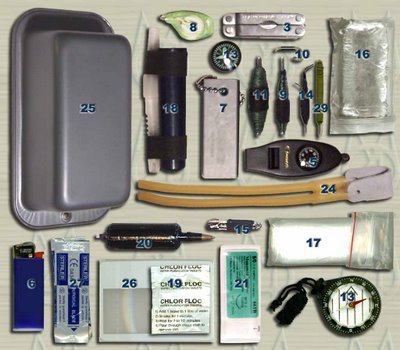
The rest of the basics are predictable and quite consistent from list to list: water, whistle, can opener, first aid kit, copies of important documents, sleeping bags or warm blankets, waterproof matches, etc. The only thing missing is a Paul Oakenfold CD.
Indeed, the core contents of catastrophe survival kits have barely changed since World War I, and, as such, allow little room for personal expression. However, all of the lists do recommend storing at least 72 hours' worth of food – and food customization is a field of endless opportunity.
There are several things to bear in mind whilst considering what food you should buy to prepare for urban armageddon. Food should be relatively non-perishable (and you should remember to replace it before it expires), require little or no cooking, and be low-sodium so as not to provoke chronic thirst. Canned foods, powdered and instant foods, jerky and peanut butter are standards on the "do-it-yourself" list, with instant soup cups described as a "real boon."

Vegans and Atkins-aficionados, as usual, will find their choices more limited. In a CarbSmart article entitled "A New Day and New Priorities: Being Prepared For The Unforeseen," Di Bauer recommends that low-carbers stock up on canned clams (her suggestion: "bread" them with unflavored protein powder), Ragu Double Cheddar Sauce, diet soda, and an intriguing product called not/Starch. ("If the world ends, I am going to be buried with my not/Starch").
Vegans, of course, seem to be understandably concerned with post-catastrophe protein sources – but, from what I've read, they also seem to have a good handle on the cunning you'll need to survive urban collapse, suggesting "treats for bargaining," as well as "a small bottle of spirits," because "sometimes it's just what you – or others – need." (It can also be used "as an antiseptic").
In the run-up to Y2K, Carol Reid authored the delightfully-titled, Catastrophic Cooking: Eating Right When All Is Wrong, in which she shares the secret of her "Cardboard Box Oven," which was "designed by an Aerospace Engineer" and "will bake everything from bread to pizza at temperatures up to 475 degrees." The book is now out-of-print.
Thinking outside the box – or the can – one Bay Area architecture and design student recommends growing your own emergency garden: she’s "planting a high-density orchard this winter, with varieties timed to ripen sequentially all year rather than all at once in July." Let’s hope a rather frightening man called The Everlasting Phelps doesn’t figure out where she lives, because his "plan is a little more simple. I have guns, ammo, and armor, and I plan to loot."
At specialized sites such as TheEpicenter.com or Earth Shakes ("Are you prepared? Wait no longer!"), online shoppers are offered a choice between 3600-calorie, "pleasant tasting, shortbread cookie-like" foodbars, "6 Can Food Modules," "10 Year Super Vitamins," bags of "Survival Candy," and Heater Meals.

Duct tape, food, and water are the first things the urban catastrophe shopper might purchase – but if the New Orleans Superdome taught us anything, it is the paramount importance of sanitation provision.
This is an area best left to the professionals, and Earth Shakes seems to have covered all the bases: it offers a PETT, WAG BAGS, PUP, and TOTE ensemble. These are, respectively: a Portable Environmental Toilet, "weighing only 7lbs, yet the same height as a standard toilet"; Waste Alleviation and Gelling bags containing "Pooh Powder" (a unique product that "gels liquids, catalyzes decay, and removes odor"); Portable Utility Pop-up tent (to ensure privacy); and a TOTE backpack with which to carry everything around.
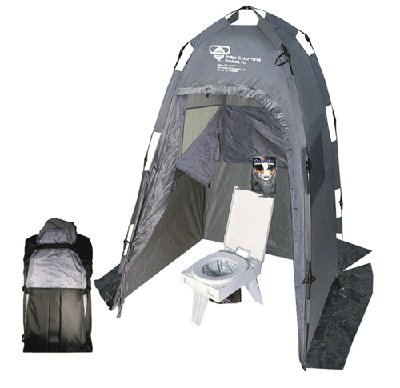
Assuming you can find and lift a manhole cover in the midst of catastrophe, the Japanese have even developed a WAG BAG-free option. You are instructed to install it immediately above a (hopefully still intact) municipal sewer system – then relax...
I’d also like to draw your attention to the "Shower in a Bag" – ("No rinsing needed. Microwaveable too!") – and, for the shy or hijab-wearing, a "Deluxe Privacy & Shower Room." Truly, all the comforts of home.
Meanwhile, if money's no object, there's the "disaster kit of the future." With this, CNET staff writer Stefanie Olsen introduces us to Seldon Laboratories' "nano mesh," which can be fabricated into a "waterstick," allowing fortunate survivors to "suck ditch water like they would using a straw in a glass of water." Another membrane technology works by fluid osmosis, with one side flavored "so it can turn dirty puddle water into Gatorade."
Other tech-savvy toys include a blanket that heats to 104 degrees for eight hours, a flexible light-sheet made of semi-conductors which glows for up to eleven years, a $300 “emergency portable oxygen cylinder with enough air to last more than an hour,” and a full-body viral barrier jumpsuit, which protects against the terrifyingly re-named "Asian blood flu."
There has even been promising progress in the world of rescue robotics.
Howie Choset at Carnegie Mellon University has developed snake-bots, designed to "slither through collapsed buildings in search of victims trapped after natural disasters or other emergencies." In an industry breakthrough, "Breadstick" and "Pepperoni" – two prototype robots "about the size of a human arm or smaller" – can climb up and around household pipes. Meanwhile, in Japan, the Kyushu-based TMSUK has developed Enryu (or "rescue dragon"), which is "mounted on a tread similar to a military tank," and uses "two hydraulically operated arms with a reach of 5 meters" to lift as much as 500 kilograms.
Finally, while down-to-earth sites such as the Red Cross simply recommend storing your catastrophe kit in a tough plastic box or backpack, manufacturers in the niche market of urban catastrophe preparation know that, while the kit’s packaging may not save your life, it could well influence your purchasing decisions. PingMag’s recent survey of Japanese earthquake preparation products directs us to a pink "girl’s emergency kit" –

– as well as this rather sharp offering from Muji.
In the U.S., more time seems spent on the names of these kits than on their containers, so you're offered a double entendre-laden choice between the Triple Delight, the Family Royale, and the One Person Starter Disaster Fanny Pack.
But I leave you with two parting thoughts: first, the world’s "ONLY Armageddon Survival-Kit" is available here. It does not appear to contain duct tape – but it does "guarantee immortality." Second, cash spent on urban catastrophe preparation gear is never wasted: even if you're lucky enough not to have to use it, today’s kit is tomorrow’s collectible. Phil Boguch’s World War II survival kit, containing both silk stockings and chocolates, is now on display at the Mercer Island Museum of Flight; and a World War I M-592 Backpad-Style Survival Kit is valued at $1000 at Stan Wolcott’s Lucky Forward Militaria.
What could you possibly be waiting for?
The Myth of Solid Ground

About six months ago I picked up a copy of David Ulin's The Myth of Solid Ground, on earthquakes and earthquake prediction. I started reading it in a hotel room – then finished it aboard an airplane, my own solid points of reference put temporarily on hold. The book really stuck with me, and I soon posted about it on BLDGBLOG.
Then, a few weeks ago, I got in touch with David and we set up a telephone interview, during which time we talked about everything from the religious implications of earthquakes to the JFK assassination, from the particularly Californian subculture of earthquake predictors to the psychological role played by seismic instability in "the subterranean mythos of people's lives," how they find "identity in the turbulence of the land." (Quoting from Ulin's book).
David was friendly, open, and generous with explanations. Throughout the conversation he spoke in great looping sentences, full of parantheses and clarifications; transcribing the tape took on the air of a topological exercise, finding where the punctuation might best fit.
That interview is now online at Archinect, published for the 100th anniversary of the 1906 San Francisco earthquake. So check it out.
Subscribe to:
Posts (Atom)